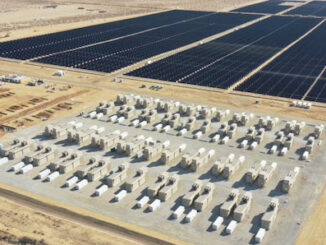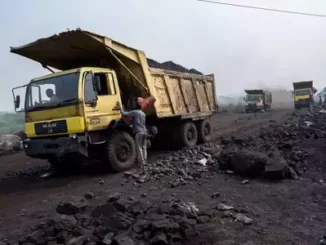
As India aims to aggregate 500 GW of clean energy to its energy output by 2030, the renewable gas revolution is also stepping up a green roadmap for the country. India is consistently evolving in renewable gas production with schemes like GOBAR-Dhan (Galvanizing Organic Bio-Agro Resources) by the Government of India, SATAT (Sustainable Alternative Towards Affordable Transportation) by the Ministry of Oil & Gas, and others. There is a significant emphasis on the maximum use of renewable gas like CBG (Compressed Biogas) to reduce the carbon footprint of vehicles and industries. While the GOBAR-Dhan scheme is focused on the ‘waste to wealth’ set-up of plants intended to generate wealth and energy from cattle & organic waste and simultaneously foster cleanliness in the villages, the SATAT scheme is designed to motivate entrepreneurs to set up CBG plants and produce & supply CBG to various Oil Marketing Companies (OMCs) for sale as automotive and industrial fuels.
With robust demand, increasing investments, and policy support, India now stands in fourth position globally for the overall installed renewable energy capacity. To further expedite India’s ambitious targets towards the expansion of renewable energy and renewable gas, the government of India is continuously fueling the mission, whether it is through the inclusion of ‘Green Growth’ in the Union budget as a prime focus or through various policy and legislative mandates such as Energy Conservation Amendment Act, missions like National Green Hydrogen Mission and production linked incentive (PLI) schemes. Also, the public-private partnerships (PPP) model is pivotal in converting the country’s dream of becoming a renewable energy leader into reality. To achieve these energy transition goals, setting up Bio-CNG plants, waste management, CBG-based vehicles, and a push towards organic farming is essential.
How are government schemes supporting the renewable gas revolution in India?
The government of India has, time and again, presented various schemes to support renewable gas production at a large scale. The Ministry of New and Renewable Energy has been bolstering bioenergy in India since the 1980s so that the vast surplus biomass, cattle dung, and industrial and urban biowaste available in the country is maximized to its full potential. Let’s understand how these schemes are working in favor of the renewable gas revolution in India.
GOBAR-Dhan Scheme
Under this scheme, 584 Bio Gas/CBG plants are completed and fully functional, while 195 Bio Gas/CBG plants are in construction mode. The GOBAR-Dhan plan has covered 152 districts to date, in which Tripura is the first state to set up GOBAR-Dhan projects in all communities. While the installed capacity of Bio Gas is 19,837 m³, it is 3,11,086 kg in terms of the installed capacity of a commercial CBG plant.
SATAT Scheme
The SATAT scheme is one of the promising schemes of the government launched on 1st October 2018 to encourage the production of compressed biogas (CBG) and is going forward despite the pandemic break at the start. It is established to define an ecosystem for the production of CBG from various waste or biomass sources available at the disposal. Under the SATAT scheme total of 40 biogas plants have been established, while only 26 CBG plants are displayed on the SATAT profile.
National Bio Energy Programme
The National Bio Energy program is a massive initiative by the Ministry of New and Renewable Energy (MNRE) for FY 2021-22 to 2025-26 which will be implemented in two phases. The program’s first phase includes three sub-schemes- Waste to Energy Program, Biomass Programme, and Biogas Programme. While Waste to Energy is a program on energy from urban, industrial, and agricultural wastes or residues to support the establishment of large Biogas, BioCNG, and Power plants, excluding MSW for power projects, the Biomass program is implemented to support the promotion of biomass-based cogeneration in Industries and manufacturing of Briquettes and pellets. The budget outlay for the program is Rs 858 crore.
India Energy Week 2023
Focussing on powering sustainable and equitable economic growth for the country, India Energy Week 2023, the first significant event under India’s G20 presidency, has boosted the renewable energy sector immensely, where the Prime Minister of India called India an emerging leader in green hydrogen space. With participation from all the public and private entities working for renewable energy development, energy week signaled India’s commitment towards clean energy through a roadmap to cut reliance on imported fossil fuels.
India’s thrust to ‘Green Growth’
While the Union budget 2023-24 was unveiled, ‘Green Growth’ emerged as the epicenter of the country’s vision. The government has focussed mainly on propelling the idea of maximizing green energy usage among the public in their current budget so that the carbon intensity of the Indian economy can be reduced while achieving the desired clean and green energy targets and providing green job opportunities at a larger scale. A slew of initiatives that India has announced to thrust to ‘Green Growth’ includes:
- Green hydrogen production with a set target of the annual production of 500 MMT by 2030
- Energy transition, net zero objectives & energy security with a budget outlay of Rs 35,000 crore
- 13-GW renewable energy evacuation from Ladakh with an investment of Rs 20,700 crore
- Replacement of old vehicles emitting pollution with new cars in the government
- Green Credit Programme to encourage behavioral change towards the environment where the government will give incentives to such companies, individuals, and local bodies whose actions are environmentally sustainable and responsive
- Viability gap funding for battery storage systems with a capacity of 4,000 MWh (megawatt per hour)
How has India evolved in Renewable energy?
India has significantly evolved in terms of installed renewable energy capacity. It has witnessed a 396 percent increase in renewable energy installed capacity in the last 8.5 years. From 76.37 GW in March 2014 to 159.98 GW in May 2022, the installed renewable energy capacity has significantly increased by around 109.4 percent, paving the way for a greener future. Till October 2022, India had achieved 166 GW of renewable energy capacity. In India, renewable energy is 26.53 percent of the total installed generation capacity.



